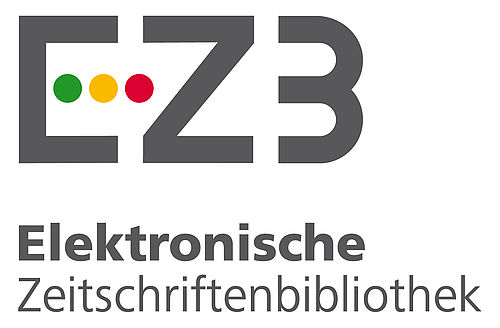Abstract
References
- 1. Shrestha, S., Kaushik, V. S., Eshwarappa, R. S. B., Subaramaihha, S. R., Ramanna, L. M., & Lakkappa, D. B. (2014). Pharmacognostic studies of insect gall of Quercus infectoria Olivier (Fagaceae). Asian Pacific Journal of Tropical Biomedicine, 4(1), 35-39.
- 2. Fabre, B., Poitier, A., Fontanel, D., Duvnjak, P., (1992). Brevet européen. Extraits de Noix d'Alep, leur préparation et leurs applications. 0496173 A1, 2-7.
- 3. Elham, A., Arken, M., Kalimanjan, G., Arkin, A., & Iminjan, M. (2021). A review of the phytochemical, pharmacological, pharmacokinetic, and toxicological evaluation of Quercus Infectoria galls. Journal of Ethnopharmacology, 273, 113592.
- 4. Kaur, G., Hamid, H., Ali, A., Alam, M. S., & Athar, M. (2004). Antiinflammatory evaluation of alcoholic extract of galls of Quercus infectoria. Journal of ethnopharmacology, 90(2-3), 285-292.
- 5. Kuo, C. L., Lai, K. C., Ma, Y. S., Weng, S. W., Lin, J. P., & Chung, J. G. (2014). Gallic acid inhibits migration and invasion of SCC 4 human oral cancer cells through actions of NF κB, Ras and matrix metalloproteinase-2 and-9. Oncology reports, 32(1), 355-361.
- 6. Harish, B. G., Krishna, V., Kumar, H. S., Ahamed, B. K., Sharath, R., & Swamy, H. K. (2008). Wound healing activity and docking of glycogen-synthase-kinase-3-β-protein with isolated triterpenoid lupeol in rats. Phytomedicine, 15(9), 763-767.
- 7. Lastra Valdés, H., Rodríguez Leyes, E., Ponce de León Rego, H., & González Sanabia, M. L. (2000). Método analítico para la cuantificación de taninos en el extracto acuoso de romerillo. Revista cubana de plantas medicinales, 5(1), 17-22.
- 8. Sánchez‐Moreno, C., Larrauri, J. A., & Saura‐Calixto, F. (1998). A procedure to measure the antiradical efficiency of polyphenols. Journal of the Science of Food and Agriculture, 76(2), 270-276.
- 9. Bhat, R., Xue, Y., Berg, S., Hellberg, S., Ormö, M., Nilsson, Y., ... & Avila, J. (2003). Structural insights and biological effects of glycogen synthase kinase 3-specific inhibitor AR-A014418. Journal of Biological Chemistry, 278(46), 45937-45945.
- 10. Zhang, L., Xu, M., Guan, Q., Jiang, J., Sun, K., & Manirafasha, E. (2023). Determination of vegetable tannins from plants in China. Biofuels, Bioproducts and Biorefining, 17(3), 592-601
- 11. Arina, M. I., & Harisun, Y. (2019). Effect of extraction temperatures on tannin content and antioxidant activity of Quercus infectoria (Manjakani). Biocatalysis and Agricultural Biotechnology, 19, 101104.
- 12. Kamarudin, N. A., Muhamad, N., Salleh, N. N. H. N., & Tan, S. C. (2021). Impact of solvent selection on phytochemical content, recovery of tannin and antioxidant activity of quercus infectoria galls. Pharmacognosy Journal, 13(5).
- 13. El Kerdawy, A. M., Osman, A. A., & Zaater, M. A. (2019). Receptor-based pharmacophore modeling, virtual screening, and molecular docking studies for the discovery of novel GSK-3β inhibitors. Journal of Molecular Modeling, 25, 1-21.
- 14. Arfeen, M., Bhagat, S., Patel, R., Prasad, S., Roy, I., Chakraborti, A. K., & Bharatam, P. V. (2016). Design, synthesis and biological evaluation of 5-benzylidene-2-iminothiazolidin-4-ones as selective GSK-3β inhibitors. European Journal of Medicinal Chemistry, 121, 727-736.
Abstract
In the present study we were interested in the healing activity of Quercus infectoria gall extract. We started by preparing the extract by two methods. The polyphenol and tannin content was then determined. The antioxidant activity of the extract was evaluated in-vitro using DPPH radical scavenging assay.
The last part of this study concerns the study of the healing activity in silico by molecular docking assisted by the Shrödinger program and this via the inhibition of GSK3-β, an enzyme involved among others in the healing process.
References
- 1. Shrestha, S., Kaushik, V. S., Eshwarappa, R. S. B., Subaramaihha, S. R., Ramanna, L. M., & Lakkappa, D. B. (2014). Pharmacognostic studies of insect gall of Quercus infectoria Olivier (Fagaceae). Asian Pacific Journal of Tropical Biomedicine, 4(1), 35-39.
- 2. Fabre, B., Poitier, A., Fontanel, D., Duvnjak, P., (1992). Brevet européen. Extraits de Noix d'Alep, leur préparation et leurs applications. 0496173 A1, 2-7.
- 3. Elham, A., Arken, M., Kalimanjan, G., Arkin, A., & Iminjan, M. (2021). A review of the phytochemical, pharmacological, pharmacokinetic, and toxicological evaluation of Quercus Infectoria galls. Journal of Ethnopharmacology, 273, 113592.
- 4. Kaur, G., Hamid, H., Ali, A., Alam, M. S., & Athar, M. (2004). Antiinflammatory evaluation of alcoholic extract of galls of Quercus infectoria. Journal of ethnopharmacology, 90(2-3), 285-292.
- 5. Kuo, C. L., Lai, K. C., Ma, Y. S., Weng, S. W., Lin, J. P., & Chung, J. G. (2014). Gallic acid inhibits migration and invasion of SCC 4 human oral cancer cells through actions of NF κB, Ras and matrix metalloproteinase-2 and-9. Oncology reports, 32(1), 355-361.
- 6. Harish, B. G., Krishna, V., Kumar, H. S., Ahamed, B. K., Sharath, R., & Swamy, H. K. (2008). Wound healing activity and docking of glycogen-synthase-kinase-3-β-protein with isolated triterpenoid lupeol in rats. Phytomedicine, 15(9), 763-767.
- 7. Lastra Valdés, H., Rodríguez Leyes, E., Ponce de León Rego, H., & González Sanabia, M. L. (2000). Método analítico para la cuantificación de taninos en el extracto acuoso de romerillo. Revista cubana de plantas medicinales, 5(1), 17-22.
- 8. Sánchez‐Moreno, C., Larrauri, J. A., & Saura‐Calixto, F. (1998). A procedure to measure the antiradical efficiency of polyphenols. Journal of the Science of Food and Agriculture, 76(2), 270-276.
- 9. Bhat, R., Xue, Y., Berg, S., Hellberg, S., Ormö, M., Nilsson, Y., ... & Avila, J. (2003). Structural insights and biological effects of glycogen synthase kinase 3-specific inhibitor AR-A014418. Journal of Biological Chemistry, 278(46), 45937-45945.
- 10. Zhang, L., Xu, M., Guan, Q., Jiang, J., Sun, K., & Manirafasha, E. (2023). Determination of vegetable tannins from plants in China. Biofuels, Bioproducts and Biorefining, 17(3), 592-601
- 11. Arina, M. I., & Harisun, Y. (2019). Effect of extraction temperatures on tannin content and antioxidant activity of Quercus infectoria (Manjakani). Biocatalysis and Agricultural Biotechnology, 19, 101104.
- 12. Kamarudin, N. A., Muhamad, N., Salleh, N. N. H. N., & Tan, S. C. (2021). Impact of solvent selection on phytochemical content, recovery of tannin and antioxidant activity of quercus infectoria galls. Pharmacognosy Journal, 13(5).
- 13. El Kerdawy, A. M., Osman, A. A., & Zaater, M. A. (2019). Receptor-based pharmacophore modeling, virtual screening, and molecular docking studies for the discovery of novel GSK-3β inhibitors. Journal of Molecular Modeling, 25, 1-21.
- 14. Arfeen, M., Bhagat, S., Patel, R., Prasad, S., Roy, I., Chakraborti, A. K., & Bharatam, P. V. (2016). Design, synthesis and biological evaluation of 5-benzylidene-2-iminothiazolidin-4-ones as selective GSK-3β inhibitors. European Journal of Medicinal Chemistry, 121, 727-736.
Details
| Primary Language | English |
|---|---|
| Subjects | Plant Biochemistry, Pharmacognosy |
| Journal Section | Research Article |
| Authors | |
| Submission Date | May 24, 2024 |
| Acceptance Date | June 28, 2024 |
| Early Pub Date | July 6, 2024 |
| Publication Date | July 6, 2024 |
| Published in Issue | Year 2024 Volume: 7 Issue: 1 |
-------------------------------------------------------------------------------------------------------------------------------













-------------------------------------------------------------------------------------------------------------------------
 CUPMAP Journal is licensed under a Creative Commons Attribution-NonCommercial-NoDerivatives 4.0 International License.
CUPMAP Journal is licensed under a Creative Commons Attribution-NonCommercial-NoDerivatives 4.0 International License.
-----------------------------------------------------------------------------------------------------------------------------------------
This is an open access journal which means that all content is freely available without charge to the user or his/her institution. Users are allowed to read, download, copy, distribute, print, search, or link to the full texts of the articles, or use them for any other lawful purpose, without asking prior permission from the publisher or the author. This is in accordance with the BOAI definition of open access.
